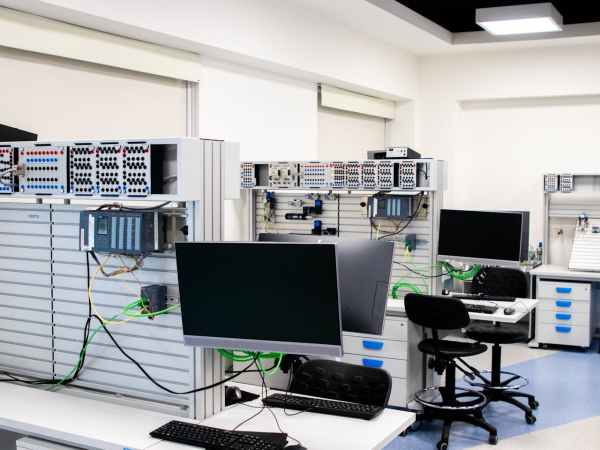This results in a more efficient use of physical hardware and forms the basis for cloud computing.
Virtualisation allows isolated workspaces to be launched on any compatible computer. What all of this means is a virtual computing environment with several virtual machines, thus maximising the resources of a system and optimising performance.
Basic concepts
Within the basic concepts of virtualisation, the physical device is called the host, and is responsible for hosting the different virtualised resources, which are called virtual machines or VMs.
To manage these virtual machines, virtualisation software needs to be installed on the host. This software can be of two types: native and hosted.
- Native virtualisation software also acts as an operating system running directly on the host hardware.
- Hosted virtualisation software. This runs on top of the host operating system.
To understand the virtualisation process, it is necessary to point out its two fundamental elements, namely virtual machines, which we have already mentioned, and which are the heart of virtualisation. These are virtual environments that simulate a physical system in software form.
The other fundamental element is the hypervisors, whose role is to create the virtualisation layer, and which are in charge of coordinating the VMs. They assign to each virtual machine the resources it needs, and allow access to the physical hardware of the main server.
Virtualisation categories
Virtualisation can be divided into different categories, among which we can highlight: Desktop virtualisation, which means that the centralised server allows for individualised desktops, and network virtualisation, which divides the bandwidth of a network into different independent channels.
Alongside these are software virtualisation, which is responsible for partitioning applications from hardware and the operating system, and storage virtualisation, which allows all storage devices on the network, whether they are installed on individual servers or stand-alone storage units, to be accessed and managed as a single storage device.
We can also mention data virtualisation, CPU (central processing unit), GPU (graphics processing unit), or cloud virtualisation, among others.
Advantages of virtualisation
There are many advantages that virtualisation provides in a company’s processes, such as:
- Cost cutting. It means a significant saving in terms of equipment, space and consumption.
- Simpler management. Replacing physical systems with software-defined virtual machines makes them easier to use and manage.
- Possibility of monitoring. Allows you to track the behaviour of virtual machines.
- Improves hardware performance and efficiency.
- Improves backup processes.
- Faster and more agile distribution of applications and resources.
- Reduces or eliminates downtime.
- Greater security. Makes it harder for cybercriminals to access files and quicker to back them up.
Virtualisation and energy efficiency
Another advantage of virtualisation has to do with energy efficiency and sustainability.
Virtualised environments are almost 30% more energy efficient than bare metal environments, so server consolidation in virtualised environments, in addition to reducing the need for physical hardware by improving operational efficiency, also contributes to a significant reduction in energy consumption.
Virtualisation vs Cloud Computing
Virtualisation and cloud computing are two concepts that refer to the creation of useful environments from abstract resources.
Virtualisation is simply the replacement of some physical component with a virtual one, while cloud computing refers to a specific information technology (IT) configuration, involving multiple computers or pieces of hardware that send data over a network.
Virtualisation is arguably the foundation for cloud computing, as it allows cloud providers to serve users with existing physical hardware. In this way, cloud users can acquire the computing resources they need.
Disadvantages of virtualisation
If we spoke earlier of the many advantages of virtualisation, we should also add some of its disadvantages, as Incibe, Spain’s national cybersecurity institute, points out.
Some of the major drawbacks are:
- Reduction in performance. Because virtual machines require virtualisation software to run, which consumes device resources, there will always be a performance loss.
- Hardware limitations. Only virtualisation software can be used.
- Excessive number of virtual machines. The number of virtual machines can be greatly increased as there is no need to invest in hardware resources, which can lead to increased administration and security problems if not foreseen.
- Centralisation. There is a risk that placing all virtual machines on the same device could jeopardise the continuity of services in the event of a host problem.
- Financial investment. If companies that want to invest in virtualisation do not have the necessary hardware resources, they will have to make a financial investment.
In any case, the National Cybersecurity Institute itself advises that before implementing virtualisation solutions in the company, a feasibility study should be carried out, in which the company’s particularities should be taken into account.







